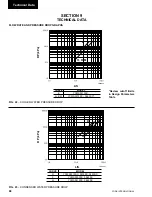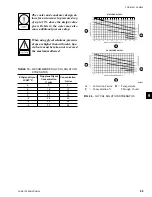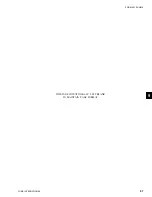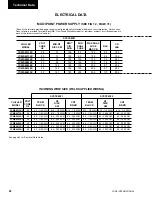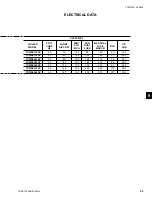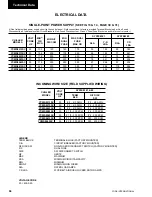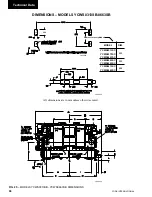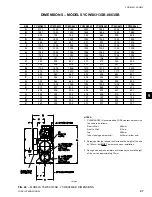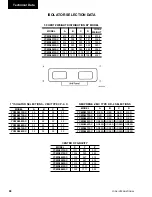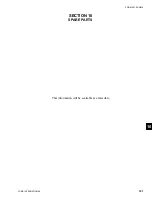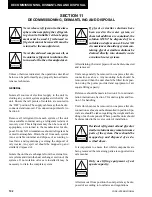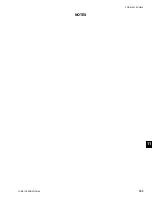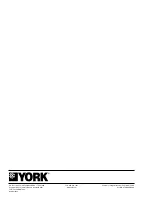
YORK INTERNATIONAL
102
SECTION 11
DECOMMISSIONING, DISMANTLING AND DISPOSAL
Never release refrigerant to the atmo-
sphere when emptying the refrigerat-
ing circuits. Suitable retrieval equip-
ment must be used. If reclaimed re-
frigerant cannot be reused. It must be
returned to the manufacturer.
Never discard used compressor oil, as
it contains refrigerant in solution. Re-
turn used oil to the oil manufacturer.
Unless otherwise indicated, the operations described
below can be performed by any properly trained main-
tenance technician.
GENERAL
Isolate all sources of electrical supply to the unit in-
cluding any control system supplies switched by the
unit. Ensure that all points of isolation are secured in
the ‘OFF’ position. The supply cables may then be dis-
connected and removed. For connection points refer to
Section 4.
Remove all refrigerant from each system of the unit
into a suitable container using a refrigerant reclaim or
recovery unit. This refrigerant may then be re-used, if
appropriate, or returned to the manufacturer for dis-
posal. Under NO circumstances should refrigerant be
vented to atmosphere. Drain the oil from each system
into a suitable container and dispose of according to
local laws and regulations governing the disposal of
oily wastes. Any spilt oil should be mopped up and
similarly disposed of.
Isolate the unit heat exchangers from the external wa-
ter systems and drain the heat exchanger section of the
systems. If no isolation valves are installed it may be
necessary to drain the complete system.
If glycol or similar solutions have
been used in the water system, or
chemical additives are contained, the
solution MUST be disposed of in a
suitable and safe manner. Under NO
circumstances should any system con-
taining glycol or similar solutions be
drained directly into domestic waste
or natural water systems.
After draining, the water pipework can be disconnected
and removed.
Units can generally be removed in one piece after dis-
connection as above. Any mounting bolts should be
removed and then the unit should be lifted from posi-
tion using the points provided and equipment of ad-
equate lifting capacity.
Reference should be made to Section 4 for unit instal-
lation instructions, Section 9 for unit weights and Sec-
tion 3 for handling.
Units which cannot be removed in one piece after dis-
connection as above must be dismantled in position. Spe-
cial care should be taken regarding the weight and han-
dling of each component. Where possible units should
be dismantled in the reverse order of installation.
Residual refrigerant oil and glycol or
similar solutions may remain in some
parts of the system. These should be
mopped up and disposed of as de-
scribed above.
It is important to ensure that whilst components are
being removed the remaining parts are supported in a
safe manner.
Only use lifting equipment of ad-
equate capacity.
After removal from position the unit parts may be dis-
posed of according to local laws and regulations.
DECOMMISSIONING, DISMANTLING AND DISPOSAL
Summary of Contents for YCWS0313SC
Page 12: ...YORK INTERNATIONAL 12 THIS PAGE INTENTIONALLY LEFT BLANK TO MAINTAIN PAGE FORMAT...
Page 36: ...YORK INTERNATIONAL 36 THIS PAGE INTENTIONALLY LEFT BLANK TO MAINTAIN PAGE FORMAT Commissioning...
Page 86: ...YORK INTERNATIONAL 86 TYPICAL CONTROL PANEL WIRING Maintenance...
Page 87: ...FORM 201 24 NM2 87 YORK INTERNATIONAL TYPICAL CONTROL PANEL WIRING LD06957 8...
Page 103: ...FORM 201 24 NM2 103 YORK INTERNATIONAL NOTES 11...

